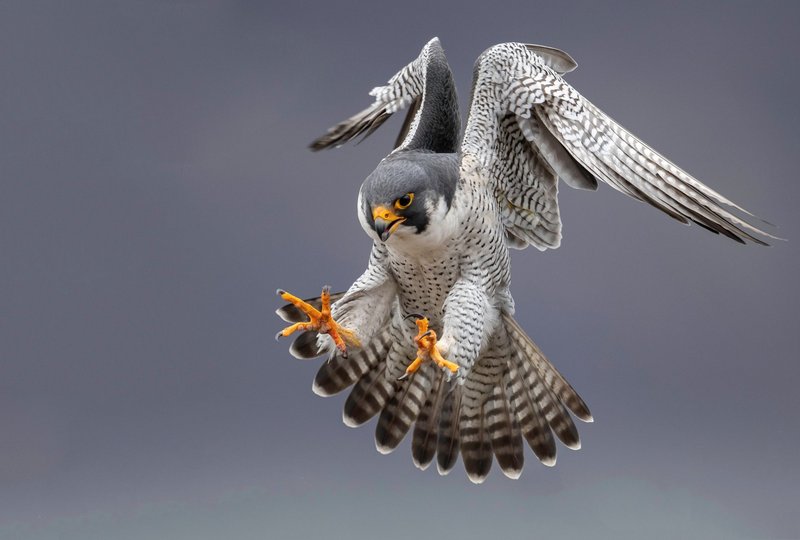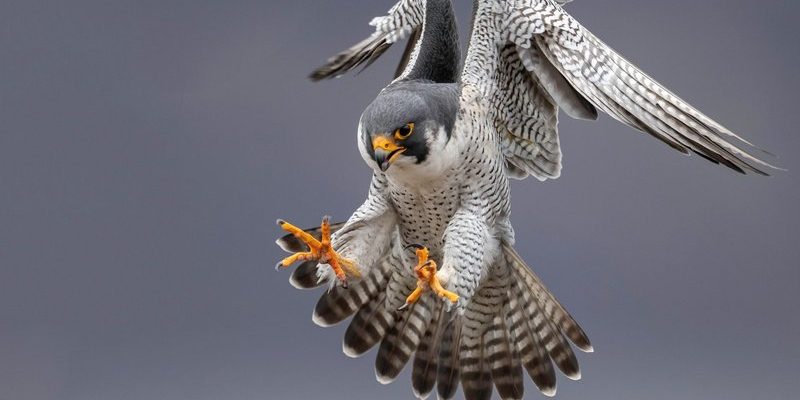
So, whether you’re gearing up for a new hobby in bird-watching or you’re just curious about these incredible birds, you’re in the right place. I promise, there’s a lot to discover about falcons, from their remarkable hunting abilities to their unique adaptations. Grab a cup of coffee, and let’s dive into the top ten facts about these amazing birds!
1. Speed Demons of the Sky
One of the most remarkable things about falcons is their speed. The peregrine falcon, in particular, holds the title for the fastest bird—and indeed, the fastest animal on the planet. During a hunting dive known as a stoop, it can reach speeds over 240 miles per hour! Imagine a sports car racing down the highway, but instead of wheels on pavement, it’s feathers slicing through the air.
But how do they achieve such crazy speeds? Falcons have specially adapted bodies, including streamlined shapes and powerful muscles. Their wings are long and pointed, perfect for cutting through the wind while diving. The next time you see one soaring overhead, just remember: that little bird is like a feathered Formula 1 car.
2. Exceptional Vision
Falcons have some of the best eyesight in the animal kingdom. They can spot prey from a mile away! This is thanks to their large eyes, which are packed with a special type of vision cell called cones that help them see in color and detect even the slightest movements.
Think about it: if you were a falcon, you’d be able to see a mouse scurrying around from high up in the sky! Their amazing vision isn’t just for show; it’s essential for hunting. With eyesight that’s about eight times better than ours, falcons can swoop down on unsuspecting prey with pinpoint precision.
3. Masters of the Hunt
Falcons are skilled hunters, employing various techniques to catch their food. They mainly hunt smaller birds, but they’re not picky eaters. Their diet can also include insects and small mammals. When hunting, falcons rely on speed and agility, often surprising their prey with a sudden dive.
Here’s where it gets interesting: falcons are known to hunt in pairs. This teamwork can be super effective. One falcon will distract the prey while the other swoops in for the catch. This level of cooperation among birds is quite impressive and showcases their intelligence.
4. Diverse Family of Falcons
Did you know there are around 40 different species of falcons around the globe? That’s quite a family tree! They vary widely in size, color, and habitat, adapting to different environments from deserts to forests. Some well-known species include the *American kestrel* and the *Saker falcon*.
Each species has unique characteristics and adaptations. For example, the *prairie falcon* has a lighter build and prefers open habitats, while the *eleonora’s falcon* is known for its remarkable migration patterns. This diversity is one reason falcons are so fascinating to study.
5. Unique Mating Rituals
Falcons have interesting courtship displays during mating season. Male falcons often perform elaborate aerial displays to attract females. These displays include high-speed dives, rolls, and impressive swoops. It’s like watching a high-stakes airshow!
Once a pair bonds, they become lifelong partners. The male and female work together to build their nest, typically in high places like cliffs or the ledges of tall buildings. This strong bond is another reason falcons are admired and studied.
6. Nesting Habits
When it comes to nesting, falcons are quite selective. Unlike many birds, they don’t build traditional nests. Instead, they often lay their eggs in natural cavities, such as rocky ledges, or even re-purpose nests abandoned by other birds.
Falcons usually lay 3 to 5 eggs, which both parents help incubate. After about 30 days, the chicks hatch and are dependent on their parents for food and protection. Watching these young falcons grow and learn to fly can be an awe-inspiring experience.
7. The Role of Falcons in Culture
Falcons have played a significant role in human culture throughout history. From ancient civilizations to modern times, they’ve been symbols of nobility, power, and freedom. In many cultures, falconry—training birds of prey for hunting—is considered a noble sport.
In the Middle Ages, falcons were often associated with royalty. Kings and queens would showcase the birds as a sign of status and power. Today, falconry is still practiced and has evolved into a regulated sport that emphasizes the bond between human and bird.
8. Conservation Status
Unfortunately, not all falcon species are thriving. Some have faced significant threats due to habitat loss, hunting, and environmental contaminants like pesticides. Conservation efforts are vital to protect these magnificent birds and their habitats.
Many organizations are actively working to conserve falcon populations. For example, the peregrine falcon was once endangered but has made a remarkable comeback thanks to conservation initiatives. These efforts highlight the importance of biodiversity and the role we all play in protecting our wildlife.
9. Falcons in Science and Research
Falcons also play an important role in scientific research. Their predatory behavior can help scientists understand ecosystems and the impacts of environmental changes. By studying falcons, researchers gain insights into other wildlife and how to manage conservation efforts effectively.
Additionally, falcons have been used in various studies related to flight dynamics. Their incredible speed and aerial abilities can inspire innovations in technology, such as drone design. Who knew these birds could contribute so much to science?
10. How to Spot a Falcon
If you’re eager to observe falcons in the wild, here are a few tips to help you spot them. First, look for their distinctive silhouette: tapered wings, long tails, and a stunning array of colors that can vary by species.
Visit open areas like parks, fields, or cliffs where they might be hunting. Early mornings or late afternoons are often the best times to catch them in action. With a pair of binoculars or a camera, you can have a great time watching these incredible birds from a distance.
In conclusion, falcons are truly remarkable creatures that inspire awe and curiosity. From their incredible speed to their important roles in ecosystems, there’s so much to learn about them. Whether you’re a budding birdwatcher or just someone who appreciates the beauty of nature, exploring the world of falcons can be a wonderful journey. So, next time you see one gliding through the sky, take a moment to appreciate not just its beauty but also its amazing story.
Now that you know some interesting facts about the falcon, maybe it’s time to get out there and see one for yourself!

